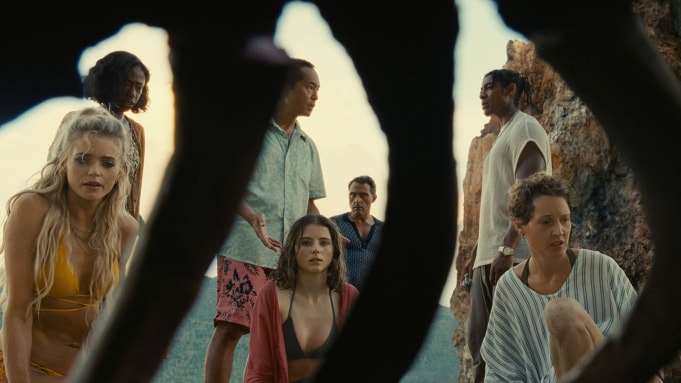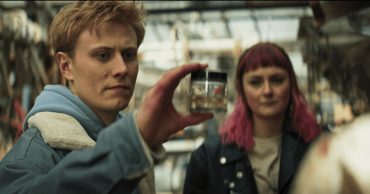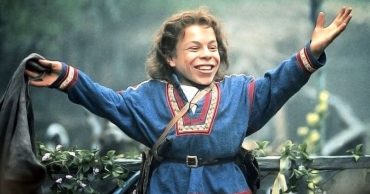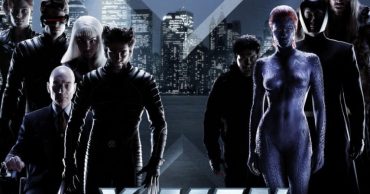
‘Old’ is one of the most entertaining horror movies of the last decade. It lets Shyamalan be Shyamalan in the most Shyamalan way imaginable. There are not-quite-gory deaths, six-year-olds having children, broken bones, dead babies, brief nudity, and heavy-handed allegories layered upon already heavy subtext. It’s not a haunting movie nor torture porn, but it earns an R-rating in nearly every regard but language.
Why, then, is it PG-13?
This is not a puritanical rundown of how the movie industry tarnishes the youths of America. In many ways, it does. However, it doesn’t do so in the way that many think. The MPAA is why so many parents worldwide let their children watch Avengers murder people in the name of law and order but scream bloody murder at any implication of sex, sexual nudity, or mature conversations about the world around us. The current rating system has experienced several makeovers since its debut in 1968. It came at a time when films such as Bonnie and Clyde and The Graduate pushed lines of sex and violence that Hollywood hadn’t crossed since the equally-preposterous MPPC was introduced in the early days of talking picture. Now, the MPAA prides itself as being the gatekeeper of the movie industry.
Ratings have some use. People who might be triggered by specific violent imagery, language, sex, and mature themes should know what they are getting into before entering the theater. However, when the rating system becomes the only metric that decides whether a teenager can watch a movie made just for them, something goes awry. Lady Bird was one of the best coming-of-age movies in years. Yes, it featured mature themes of love and sex, student-teacher boundaries, heartbreak, and women’s rights, but it did so through Greta Gerwig’s innate ability to capture things through the eyes of a young person. Yes, Saiorse Ronan’s character loses her virginity to a rebellious teenager. In the big picture, it isn’t more explicit than the insatiable male gaze of any Fast and Furious movie, nor the interspecies love of Star Wars, Marvel, and other industry behemoths.
Lady Bird might deserve its R-rating, but the problem with the current system is the implication that films such as this or Bo Burnham’s Eighth Grade are more mature in content than F9. Yes, Lady Bird boasts twenty uses of the classic “f” word. Still, as a former student at a religious school just a stone’s throw from its Gerwig’s Sacramento setting, the language is less mature and more an accurate portrayal of the teen vocabulary at the time of its post-9/11 setting. The rating system takes things that people see and hear about each day out on the street and makes them taboo, while gratuitous violence, gore, and exploitation remain standards of the PG-13 rating.
The answer to this question isn’t to make Avengers an R-rated raunch fest that judges all of its characters for their definitions of protecting the law. It’s getting a system that tells folks what to expect in a theater. Is there a sex scene? Tell us. Is there language? Tell us. Does the film’s antagonist carry out a terrorist attack in one PG-13 film only to become a good guy in ensuing PG-13 sequels? Give it to us! The rating system’s problem isn’t that it dissects every issue. The problem is how it skews our values so that realistic portrayals of adolescent life are deemed adult entertainment while Old, F9, most comedies, and our genre favorites espouse more dangerous behavior under the guise of fun and games.
M Night Shyamalan is the master of toeing this line. Other than The Happening, which proudly boasted its R-rating before critics decried its very existence, Shyamalan has mostly stuck to the family-friendly PG-13 rating. In that realm, we’ve seen a violent trainwreck in three different movies, watched a ten-year-old get haunted by dead ghosts, and watched as Mel Gibson bids his wife farewell as a car pins her to the tree. All of this is fair game, but none of it is less offensive than Lady Bird’s classroom rant in Gerwig’s films. A rating system does not work when every movie from Boss Baby to The Green Knight falls concretely into one of four ratings. PG-13 doesn’t differentiate a period drama from Liam Neeson’s slew of teen-friendly action. Rather than keeping kids out of the movies, it waters down a movie’s messaging, inserts the MPAA into the natural creative process, and fundamentally changes how studios make movies.
Steven Spielberg famously lobbied for the PG-13 rating for his sequel to a Raiders of the Lost Ark, a PG-rated adventure film featuring melting faces, inappropriate teacher-student love affairs, and monkeys who dabble in Nazi espionage. Knowing that the sequel featured eyeball soup, satanic rituals, and multiple hearts being ripped out of chest cavities, he succeeded in getting a middle ground between PG films like Poltergeist and Arnold Schwarzenegger’s growing list of R-rated action. According to Parade, modern PG-13 movies have more violence than 1980s Rs. Sex beyond clothed groping is an R-rated affair, while G, PG, and PG-13 are a breeding ground for bloodless violence, as long as there are no more than two f words and the violence replaces blood with red-hued dust. If a movie has gratuitous violence that borders on a scripted snuff film, audiences get 16 years of increasingly-violent sequels and cultural phenomenon. Add a love scene to that mix, and suddenly no one under 17 can see the movie in a theater.
Society puts uneven weight on R-ratings, M-rated video games, and parental advisory stickers. However, the difference between these and the movies ten-year-olds are watching worldwide is disappearing blood replaced with stylish, more “satisfying” kills. If violence is a problem we want to shield our kids from, covering up the blood is not the answer. On the other side, if sex is only taboo when it’s shrouded in enough innuendo to secure a teen-friendly rating, we’re not protecting children; we’re giving them more creative ways to speak about it. Rating systems do not answer anything. They inhibit the creative process, set an arbitrary standard that does not take content into effect, and rob youngsters of entertainment far less scarring than their violent favorites. Old is not the problem, nor is Lady Bird, F9, Indiana Jones, or Eighth Grade. The problem is a system that makes parent’s choices for them and gives society a flawed vision of what we deem acceptable for our youth.Old
 Follow Us
Follow Us





